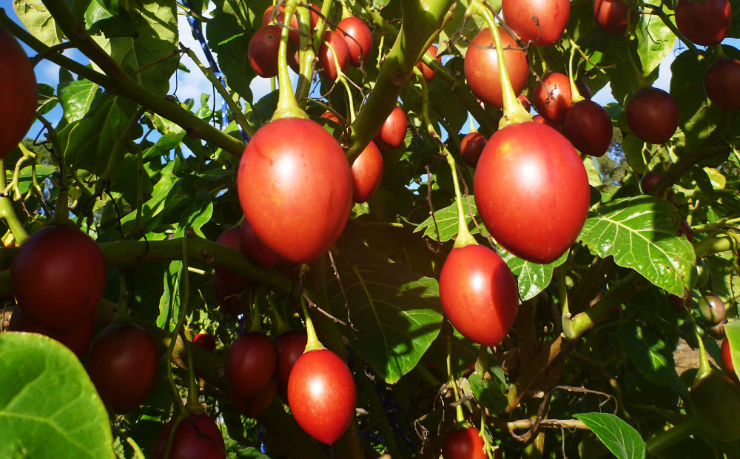Tamarillo (Solanum betaceum), often referred to as the “tree tomato,” is a vibrant, egg-shaped fruit native to the Andes mountains, specifically Peru, Ecuador, and Colombia. Indigenous communities have cultivated it for centuries, valuing its nutritional properties and tangy flavor. The fruit gained global recognition after being introduced to New Zealand in the mid-20th century, where the name “tamarillo” was coined to distinguish it from the common tomato. Today, it is widely grown in New Zealand, as well as in regions of Australia, South America, and parts of Africa.

Tamarillos are typically red, orange, or yellow, with smooth skin and pulp filled with small, edible seeds. The flavor is a unique balance of sweet and tangy, often described as a blend of passion fruit, tomato, and kiwi. Red varieties tend to have a sharper, more tart taste, while yellow and orange fruits are generally milder and sweeter.

To enjoy tamarillo, the fruit is best eaten raw after peeling, as the skin can be bitter. Slicing the fruit in half and scooping out the juicy pulp with a spoon is a common method. It can also be blended into smoothies, added to fruit salads, or turned into chutneys, sauces, and jams. When cooked, tamarillo develops a deeper sweetness, making it an excellent complement to meats, especially pork or poultry. It pairs well with herbs like basil and mint, as well as ingredients such as honey, citrus, and soft cheeses. Tamarillo’s vibrant acidity can elevate desserts like tarts and sorbets, while its tropical notes bring brightness to savory dishes.

Tamarillo is considered dietetic and a nutrient-dense, low-calorie fruit, making it a great choice for health-conscious diets. It is naturally low in calories (about 30-50 calories per fruit) and low in fat, while being high in fiber, which supports digestion and promotes a feeling of fullness, making it a suitable option for people following a weight-loss plan.



